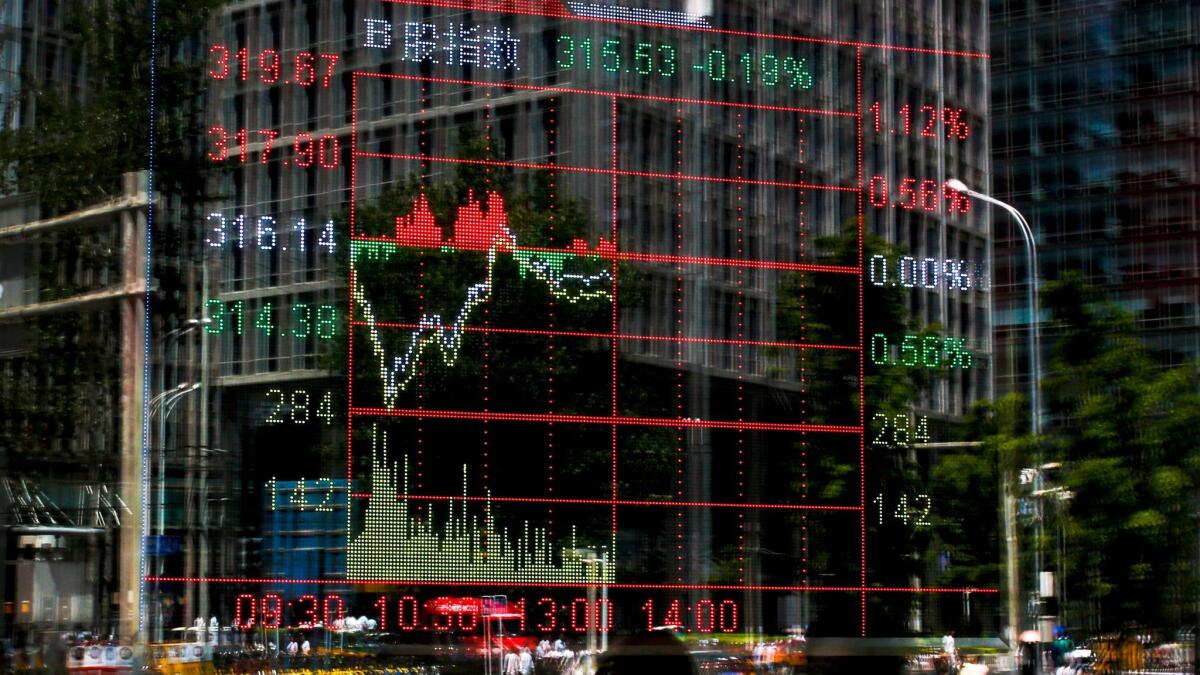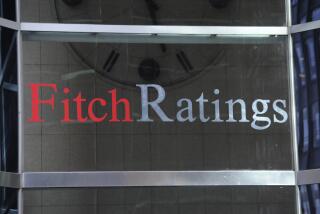Moody’s cuts China credit rating over rising debt

It’s not just Americans who are hooked on debt.
China’s increasing reliance on borrowing earned it a snub by the Moody’s ratings agency Wednesday after it cut the Asian nation’s sovereign credit rating for the first time since 1989.
The downgrade prompted a protest by Beijing, but the move highlights a growing concern about the world’s second-largest economy’s ability to steer clear of a debt-driven crisis like those seen in the United States and Europe the past decade.
Moody’s Investors Service cut Beijing’s long-term local currency and foreign currency issuer ratings by one notch to A1, from Aa3. It said China’s financial strength is likely to erode as growth slows and debt rises further.
“We expect direct government, indirect and economy-wide debt to continue to rise, signaling an erosion of China’s credit profile,” Moody’s said in a statement.
China’s Finance Ministry accused Moody’s of using “inappropriate methods” that it said gave a false picture of China’s financial outlook.
The ministry complained that Moody’s failed to give enough weight to economic reforms. The government is trying to make the economy more productive by giving market forces a bigger role and instituting “supply-side reform,” or shrinking bloated industries such as steel and cement where supply exceeds demand, which has depressed prices and led to financial losses.
“It overestimates the difficulties facing the Chinese economy and underestimates the government’s ability to deepen supply-side structural reform and appropriately expand overall demand,” the ministry said in a statement.
China’s communist leaders have been trying for about two decades to tilt its economy away from exports and capital investment toward American-style consumption, which they deem a more sustainable engine of growth. That appears to be happening faster than ever. Consumption accounted for 77.2% of China’s first-quarter growth this year, up from 64.6% in 2016.
But since the 2008 financial crisis, China’s state banks have issued a torrent of lending that has fueled property booms and infrastructure binges to compensate for an economy that’s growing half as fast as it did a decade ago. As a result, estimates of China’s total nongovernment debt have risen from the equivalent of 170% of annual economic output in 2007 to 260% last year.
Blame for the rising leverage is directed at China’s system of government, which favors allowing policymakers to put their thumbs on the scale rather than letting market forces assess risk. That has only encouraged lenders to issue more debt under the assumption Beijing would never allow the state-owned banks to fail given the toll it would have on social and political stability.
China has been trying to rein in bad lending, but it does so at the expense of growth. The Chinese economy grew by 6.7% last year, its slowest rate since 1990. To be fair, China’s economy amounted to only $830 billion back then compared with $11 trillion today.
“All of that unproductive lending in China is now coming home to roost,” said Simon Baptist, global chief economist at the Economist Intelligence Unit. “The longer it puts off its reckoning, the higher the risk of a bust similar to the U.S. in 2009.”
China’s Aa3 rating by Moody’s puts it on par with countries such as Belgium and Chile and was the first downgrade since the aftermath of the bloody crackdown on democracy protesters in Tiananmen Square in 1989.
Moody’s also changed its outlook to stable from negative, saying risks are now balanced and growth likely will remain relatively strong. Moody’s expects economic growth to decline to close to 5% over the next five years.
The Associated Press contributed to this report.
UPDATES:
1:05 p.m.: This article was updated with staff reporting.
This article was originally published at 4:35 a.m.
More to Read
Inside the business of entertainment
The Wide Shot brings you news, analysis and insights on everything from streaming wars to production — and what it all means for the future.
You may occasionally receive promotional content from the Los Angeles Times.












